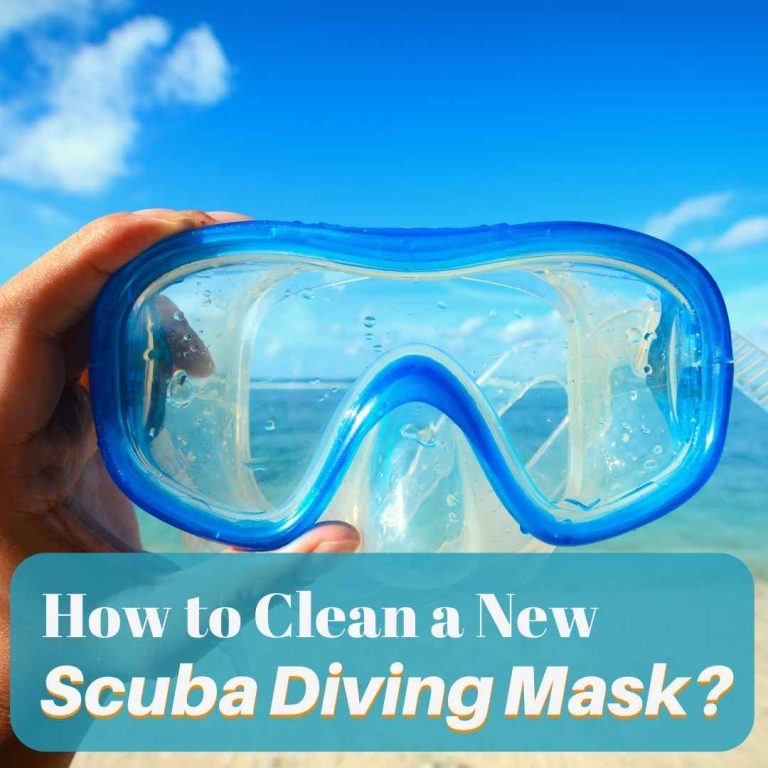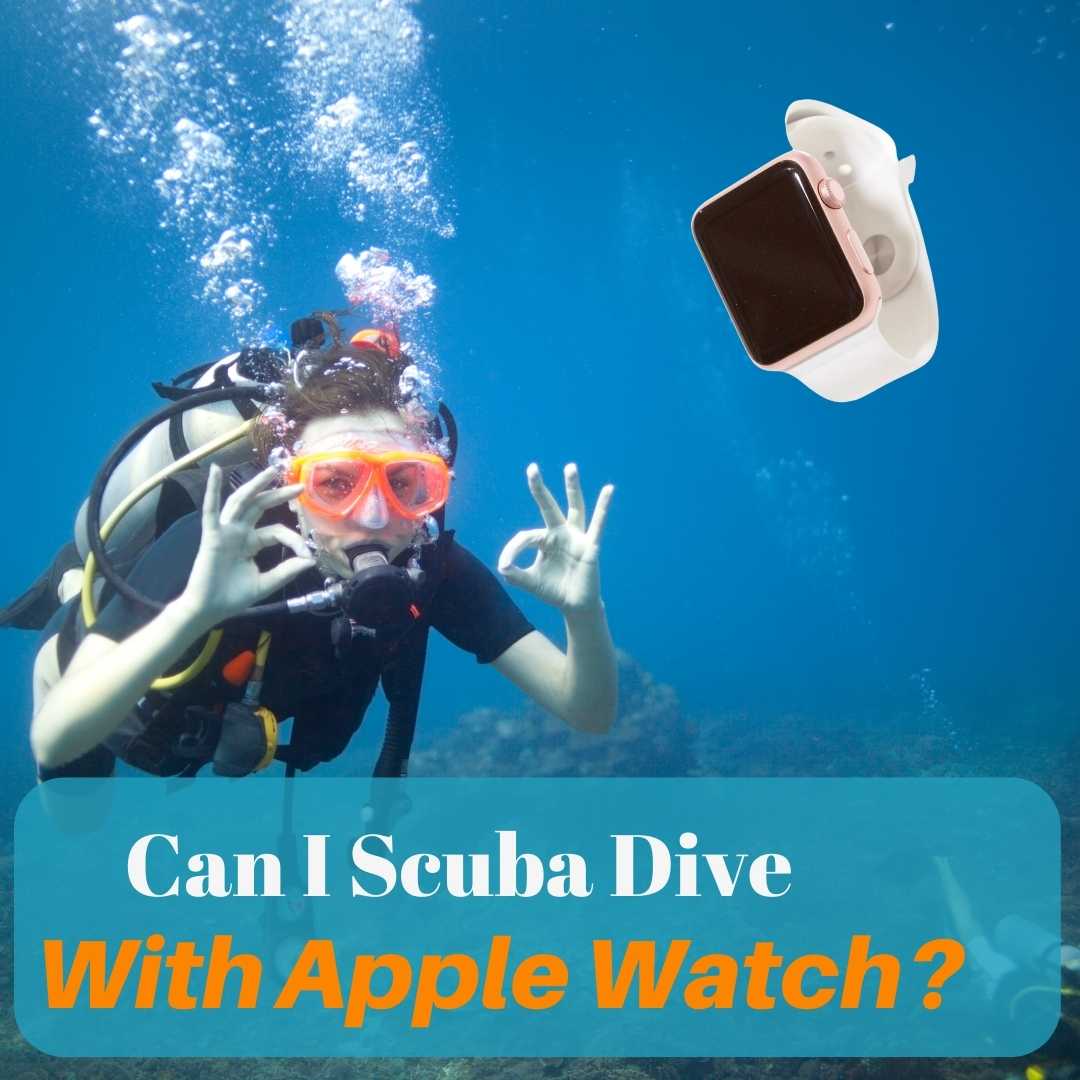Whether you are an experienced diver who just bought a new mask, or a beginner preparing for your first dive – preparing your new scuba mask is an absolute must.
In this article, you’ll find out why you need to clean a new scuba mask in the first place, and how to actually do that.
Enjoy!
Table of Contents
Why Do You Need to Pre-Treat a Brand New Scuba Mask?
Diving mask manufacturers spray the surface of the mask with a protective coating to avoid scratches during the manufacturing process. The material used is most often clear silicone.
If this protective silicone layer is not removed, your mask will be foggy. This will make it hard for you to see and, besides taking away from the overall experience, it can also be dangerous.
In most cases, your instructor will ask you if your diving mask is new, and if you haven’t cleaned it, they’ll offer to do so themselves. But if you want to do it yourself, we got you covered with a few different DIY techniques below.
Also read: Does Scuba Diving Dehydrate You?
How to Prepare Your New Scuba Mask for Diving
There are two ways of removing the protective layer from your diving mask: using a cleansing agent, or burning it.
We recommend going with a cleansing agent rather than burning. Using fire is effective, but if you don’t do it correctly there’s a risk to damage the glass on your mask.
Important note: Do not use any of the methods below on plastic lenses. Plastic lenses are likely to get scratched using the methods below. Instead, use a sponge and water. For information about your specific mask, please check its package or the manufacturer’s website.

Commercial Mask Cleaners
Having to clean new scuba diving masks is an issue everyone in the community is aware of. It doesn’t necessarily take a lot of effort to do it, but it’s still annoying. Some companies have seen this problem as an opportunity and created products made specifically for preparing new masks.
There are plenty of commercial mask cleaner products on the market. My two personal favorites are:
- Gear Aid
- Jaws
How to pre-treat your new mask with a commercial cleaner:
- Rub the inside of your mask lenses with paper towels and make sure they are dry
- Apply two drops to the inside of each lens
- Take a kitchen sponge and use it to rub the solution on each lens, make sure it reaches all areas
- Rub each lens for about 1-2 minutes
- Dip the mask into a basket of clean water
- Check to see if the silicone coating was removed

Soft Scrub
Softscrub or any other abrasive cleanser is a popular DIY choice for your new mask. While many people in the community recommend it, I tend to avoid it whenever possible. The reason why I think it’s not the best choice is that it can damage plastic lenses.
But mainly, it can damage your skin and eyes if it has a particularly high concentration of chemicals.
If you do decide to use a product like Softscrub, only use a very little amount of solution. After you’re done, make sure to wash and rinse your mask thoroughly before putting it in contact with your skin.
Also read: Does Scuba Diving Take Years Off Your Life?

Toothpaste
Toothpaste cleans your teeth because it’s abrasive, and it’s just abrasive enough to remove silicone coating. It is the best and safest method for cleaning new diving masks in my opinion.
Anyone that’s been scuba diving for a while knows that this is the method most divers use and recommend.
If I need to help someone clean their new mask on the boat, or if I run out of Gear Aid, I’ll also use toothpaste.
When choosing a toothpaste for cleaning your mask, pay attention to the following details:
- Use pasty toothpaste rather than gel
- Do not use mint toothpaste as it can irritate your eyes when using the mask
How to clean your new diving mask with toothpaste:
- Apply a little bit of toothpaste to the interior of each lens
- Use your finger to spread the toothpaste all around the surface of each lens
- Apply a little bit of pressure when spreading the toothpaste for better results
- Continue rubbing the entire surface of each lens with toothpaste for about 1-2 minutes
- Rinse the mask in a bucket with clean water, and use your finger to remove toothpaste from all areas of the mask
- Repeat the process at least 3 times (depending on how abrasive your toothpaste is)
- Check your mask’s fogginess and repeat if needed
Playing with Fire
This is the approach you use if you want to impress people (joking).
In all seriousness, lighting your mask with a lighter does work.
Is it safe? No. Would I recommend it for beginners? No. Do I do it myself? Not on masks I care about for sure.
If you want to try it, do so at your own risk.
How to pre-treat your diving mask with fire:
- Get a lighter (preferably a long barbeque lighter)
- Set the flame intensity to minimum
- Use the very “tip” of the flame
- Carefully run the “tip” of the flame along the inside of your lense
- DO NOT keep the flame in the same spot for too long – this can crack your lense
- DO NOT get the flame close to the skirts of the mask – it will burn
Also Read: Can you Scuba Dive with a Beard or Mustache?
How to Check if You Removed All the Silicone Coating
Whichever mask cleaning method you used, it’s worth checking whether it worked. You want to do that at home and be 100% sure you removed all the silicone coating before diving.
To do that, just breathe onto the interior lenses – if you see any silicone coating remaining, repeat the process.

Defog Your Mask Before Each Dive
You might think that after pre-treating your new mask once you’ll never have to clean it again. Unfortunately, that’s not the case.
Diving masks can get foggy, and we need to make sure they don’t. Fortunately, defogging your mask is much easier and quicker than removing the silicone coating.
Here’s how you do it (using your very own saliva):
- Make sure your mask is dry
- Spit on the inside of each of your lenses
- Spread the saliva across all the surface of each lens
- Let it sit for 2-3 minutes
- Rinse with water
You can also use shampoo or special defogging products, following the same steps.
Conclusion
I hope you found this article useful. If you followed along with the steps, you should have your new diving mask cleaned and ready to use.
Happy Diving!




